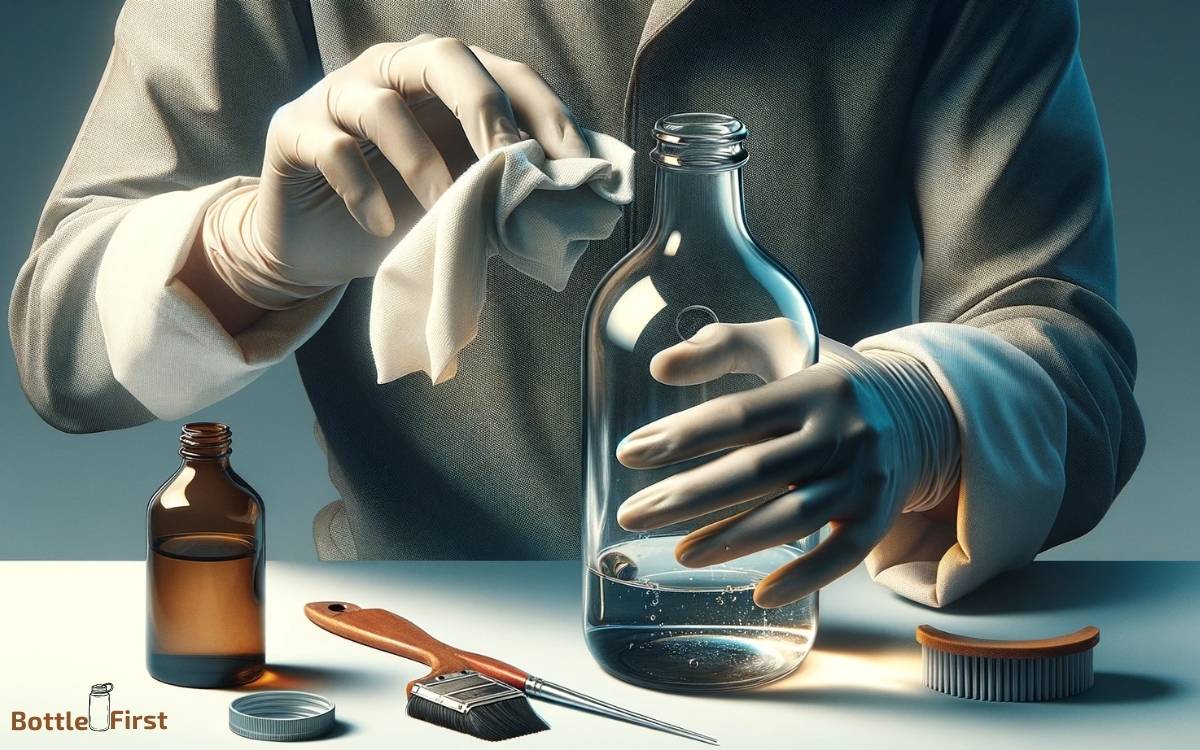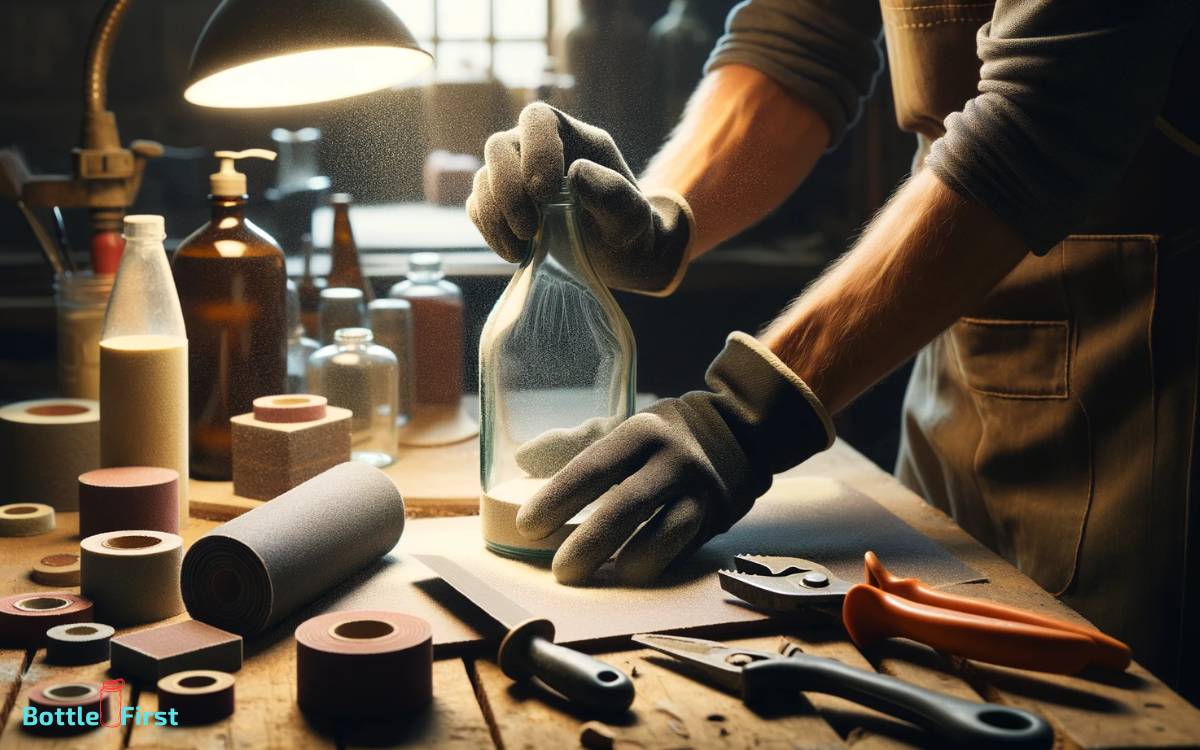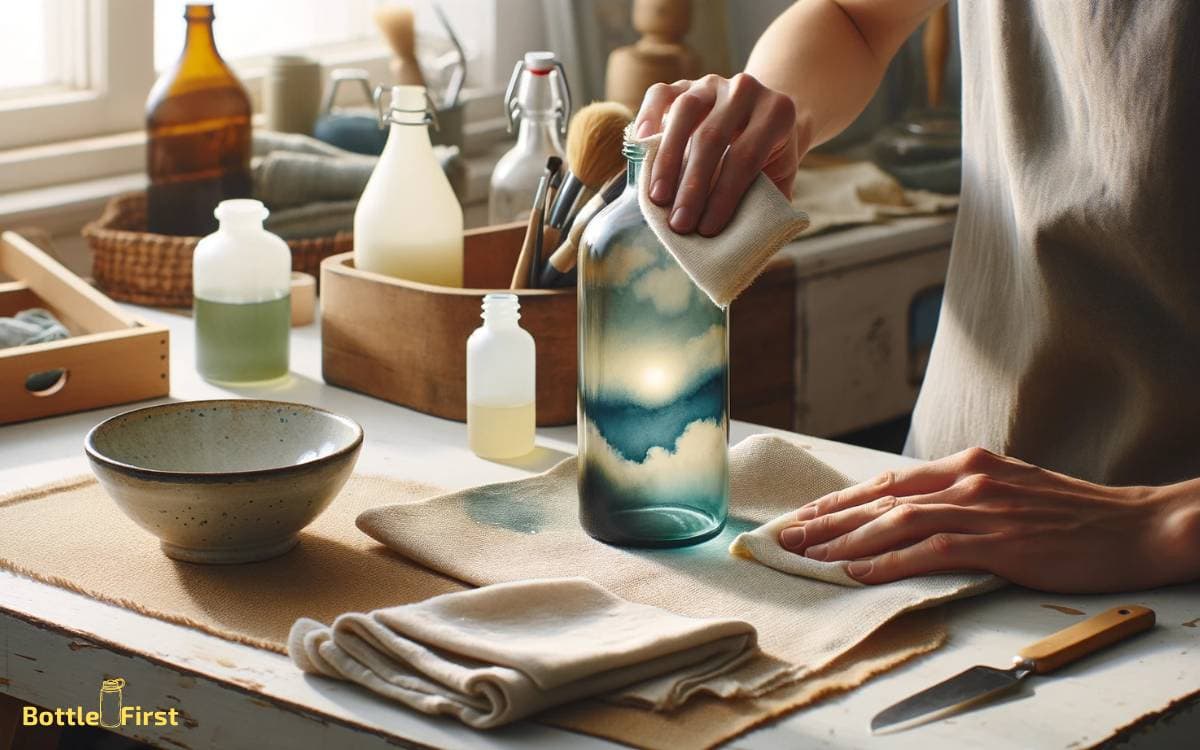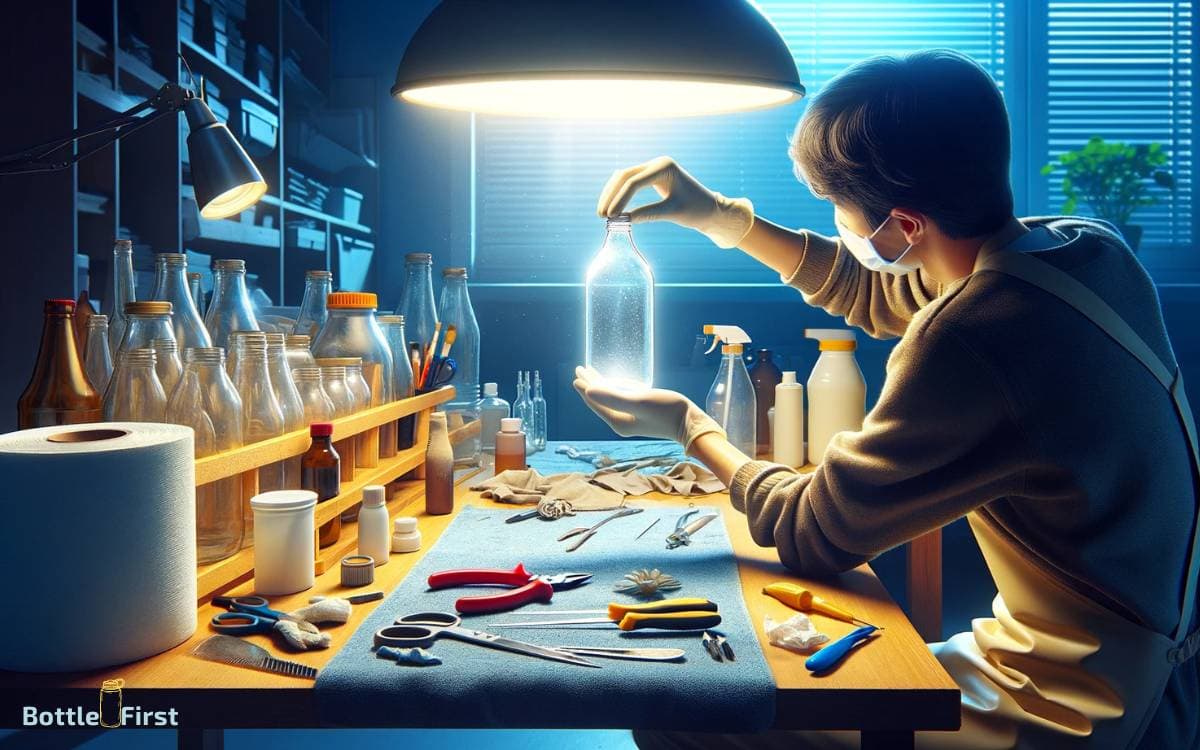How to Remove Paint from Glass Bottles? 5 Easy Methods!
To effectively remove paint from glass bottles, you can use several methods such as applying a chemical paint stripper, using natural solutions like vinegar or baking soda, or employing abrasives like steel wool or a razor blade.
Always ensure you work in a well-ventilated area and wear protective gear, such as gloves and safety glasses.
When removing paint from glass bottles, choose a method that aligns with the type of paint and your comfort level with the materials involved:
An example of using a natural solution would be creating a paste of baking soda and water, applying it to the painted areas, and allowing it to sit before scrubbing gently with a soft brush.
Discover the clarity beneath painted surfaces by gently removing paint from glass bottles, revealing their transparent elegance.
Key Takeaway
Supplies Needed
You will need the following supplies for removing paint from glass bottles:
- Rubbing alcohol
- A plastic scraper
- A soft cloth
Rubbing alcohol is an effective solvent for breaking down the paint. The plastic scraper will help to gently remove the softened paint without scratching the glass surface.
The soft cloth is essential for wiping away any remaining paint residue and for giving the glass a final polish.
These supplies are crucial for ensuring a clean and smooth removal process, allowing you to repurpose the glass bottles for innovative projects.
Once you have gathered these materials, you can move on to preparing the glass bottles for the paint removal process.
Method 1: Preparing the Glass Bottles
Before you start removing the paint from the glass bottles, make sure to choose the appropriate paint removal method based on the type of paint used.
Thoroughly clean the bottles to remove any dirt or residue that could interfere with the paint removal process. This step is crucial for ensuring successful paint removal and a smooth finish on the glass bottles.
Choose Paint Removal Method
Consideration of the appropriate paint removal method begins with an assessment of the type of paint and the condition of the glass surface.
For water-based or acrylic paints on glass, a simple soaking in warm, soapy water may suffice. However, for tougher paints like enamel or spray paint, you may need to use stronger solvents like acetone or paint strippers.
Keep in mind that abrasive methods like sanding should be used cautiously to avoid damaging the glass.
Another innovative approach is using a heat gun to soften and scrape off the paint. Additionally, glass-safe chemical removers specifically designed for paint removal can be a game-changer.
Always test the chosen method on a small, inconspicuous area of the bottle first to ensure it doesn’t damage the glass.
Clean Bottles Thoroughly
To thoroughly prepare the glass bottles, start by rinsing them with warm, soapy water to remove any surface dirt or dust.
After rinsing, inspect the bottles for any remaining paint or residue. For stubborn spots, use a scrub brush or sponge to gently scrub the surface. Once the bottles are free from dirt and paint remnants, dry them thoroughly with a clean cloth.
To ensure a pristine surface for any future applications, consider using a glass cleaner to remove any remaining residue or streaks. Additionally, a final wipe with rubbing alcohol can help eliminate any lingering oils or grime.
Taking these extra steps will guarantee that your glass bottles are impeccably clean and ready for their next use or project.
Method 2: Using Chemical Paint Strippers
When using chemical paint strippers, apply the stripper to the painted areas of the glass bottles and let it sit for the recommended time.
Ensure you follow safety precautions and work in a well-ventilated area to avoid inhaling harmful fumes. Once the paint has been removed, thoroughly clean the glass bottles to remove any remaining residue.
Chemical Stripper Application
Apply the chemical paint stripper to the painted glass bottle, following the product’s instructions carefully.
- Safety First: Put on gloves and safety goggles to protect your skin and eyes from the chemical stripper.
- Even Application: Use a brush or sponge to apply the chemical stripper evenly over the painted surface of the glass bottle.
- Dwell Time: Allow the chemical stripper to sit for the recommended time as per the product’s instructions, ensuring it doesn’t dry out.
- Scraping Off: After the dwell time, use a plastic scraper to gently remove the softened paint from the glass surface, being careful not to scratch the glass.
This innovative method ensures efficient and precise removal of paint from glass bottles, providing a clean and renewed surface for your creative projects.
Safety Precautions and Ventilation
How can you ensure proper ventilation while using chemical paint strippers to remove paint from glass bottles?
Ventilation is crucial when working with chemical paint strippers. To innovate your approach, consider using a portable ventilator or working in an outdoor space with a steady breeze.
This will help to prevent the buildup of fumes and ensure a safer environment. Additionally, wearing a respirator mask and protective gloves is essential to minimize exposure to the chemicals.
Be sure to follow all safety guidelines provided by the manufacturer of the paint stripper.
Cleaning After Paint Removal
After using the chemical paint stripper to remove the paint from the glass bottles, you’ll need to thoroughly clean the bottles to eliminate any remaining residue.
Here’s how to do it:
- Rinse: Thoroughly rinse the bottles with warm, soapy water to remove any traces of the paint stripper.
- Scrub: Use a non-abrasive sponge or cloth to scrub the bottles, ensuring all areas are cleaned.
- Vinegar Solution: Apply a solution of equal parts water and white vinegar to the bottles, then rinse thoroughly. This will help neutralize any remaining chemical residue.
- Dry: Allow the bottles to air dry completely before proceeding with any further steps.
Once the bottles are cleaned and dried, you can proceed with the next method of paint removal.
Method 3: Using Abrasive Techniques
Begin by gently sanding the painted area with a fine-grit sandpaper to remove the paint from the glass bottle. Use a circular motion and apply light pressure to avoid scratching the glass.
After the majority of the paint has been removed, switch to a medium-grit sandpaper to smooth out any remaining stubborn spots.
Be sure to keep the glass and sandpaper lubricated with water to prevent overheating and ensure a smoother sanding process.
Once the paint is completely removed, wash the bottle with soap and water to remove any leftover residue.
This abrasive technique provides an innovative and effective way to remove paint from glass bottles, giving you a clean surface for your next creative project.
Method 4: Using Natural Solvents
You can use acetone or vinegar as natural solvents to remove paint from glass bottles. These natural solvents are effective and eco-friendly options for paint removal.
Here’s how to use them:
Acetone Method:
- Soak a cotton ball or cloth in acetone.
- Gently rub the painted areas on the glass bottle.
- Allow the acetone to sit for a few minutes to dissolve the paint.
- Wipe off the paint residue with a clean cloth.
Vinegar Method:
- Create a mixture of equal parts vinegar and water.
- Soak the glass bottle in the solution for a few hours.
- Scrub the painted areas with a sponge or brush.
- Rinse the bottle with water to remove the loosened paint.
These natural solvent methods offer an innovative and chemical-free approach to removing paint from glass bottles.
Method 5: Final Steps and Tips
Once the paint has been successfully removed using the natural solvent methods discussed previously, it’s important to thoroughly clean and dry the glass bottle to ensure a smooth and polished finish.
Begin by washing the bottle with warm, soapy water, using a bottle brush to reach the interior if needed. Rinse it thoroughly and then dry it with a lint-free cloth to prevent water spots.
For a truly pristine result, consider using a glass cleaner to remove any remaining residue and give the bottle a final polish.
Additionally, if you plan to repaint the bottle or use it for a DIY project, make sure the glass is completely dry before proceeding.
These final steps will help you achieve a professional-looking, paint-free glass bottle for your next creative endeavor.
Conclusion
So, with a little patience and perseverance, you can easily remove paint from glass bottles using various methods. Remember to be cautious when working with chemical paint strippers, and always wear protective gear.
By preparing the bottles, choosing the right method, and following the final steps and tips, you can restore your glass bottles to their original, gleaming glory.
Happy painting, polishing, and perfecting!






